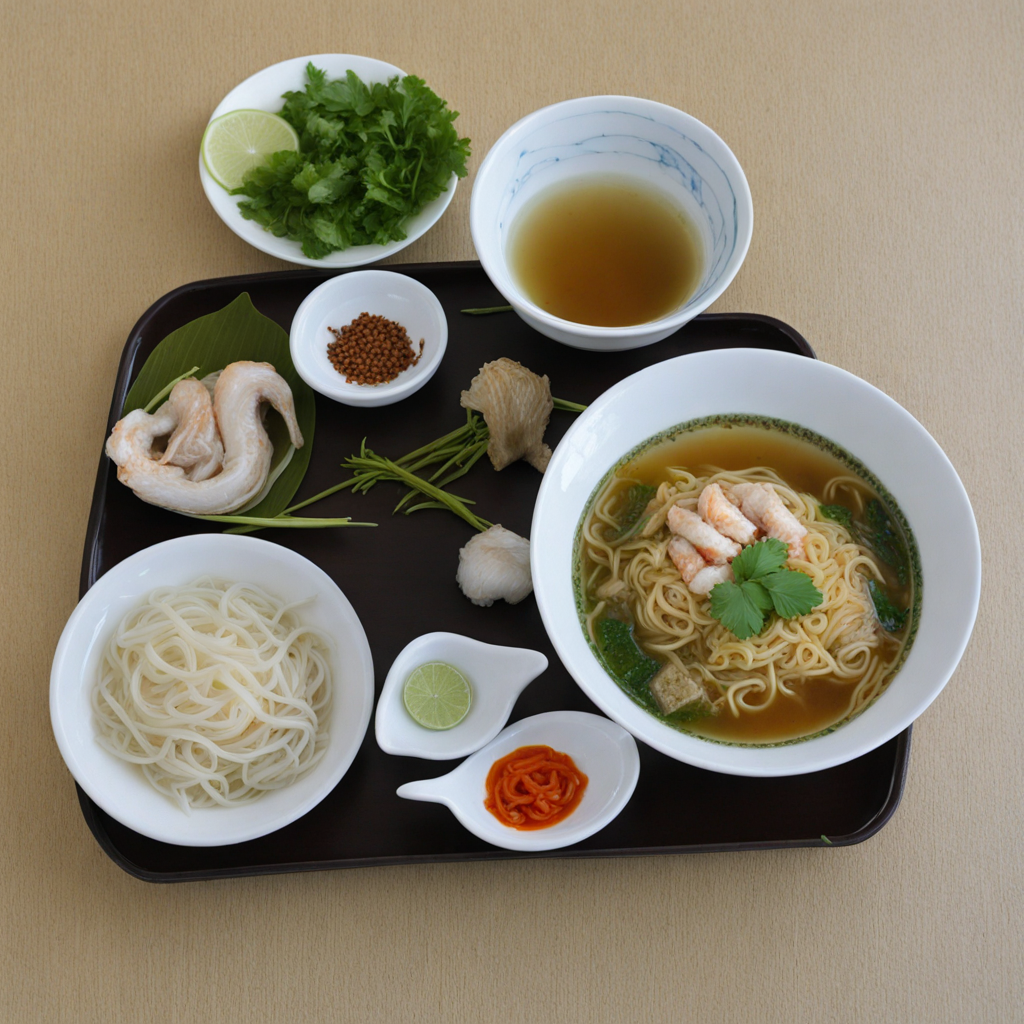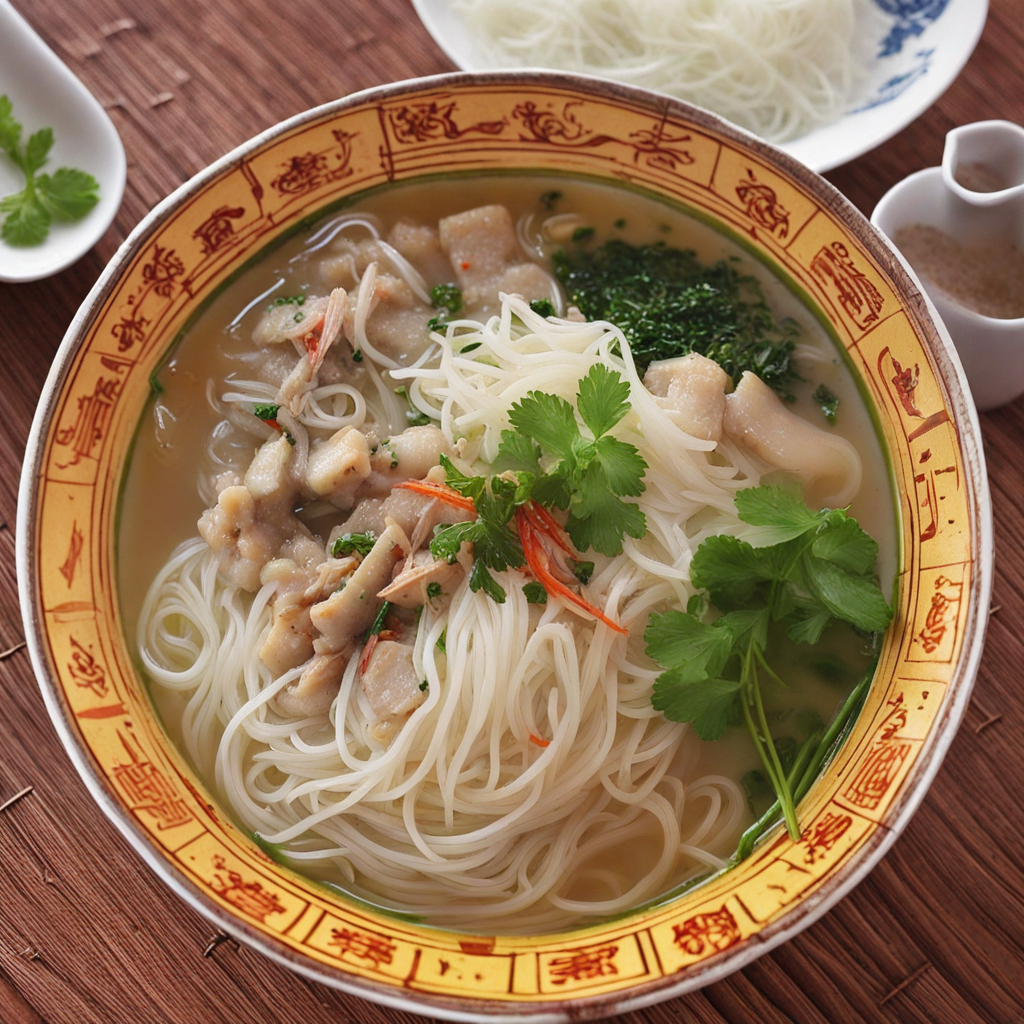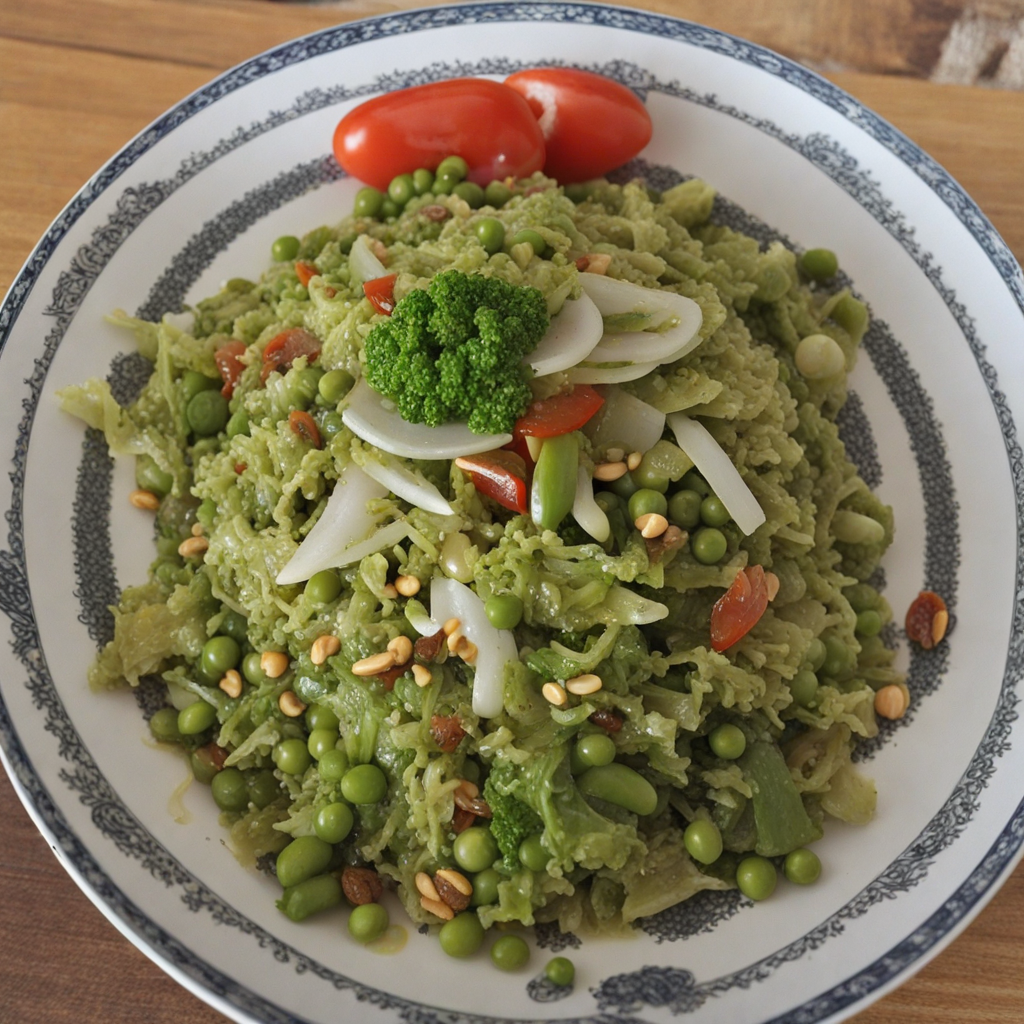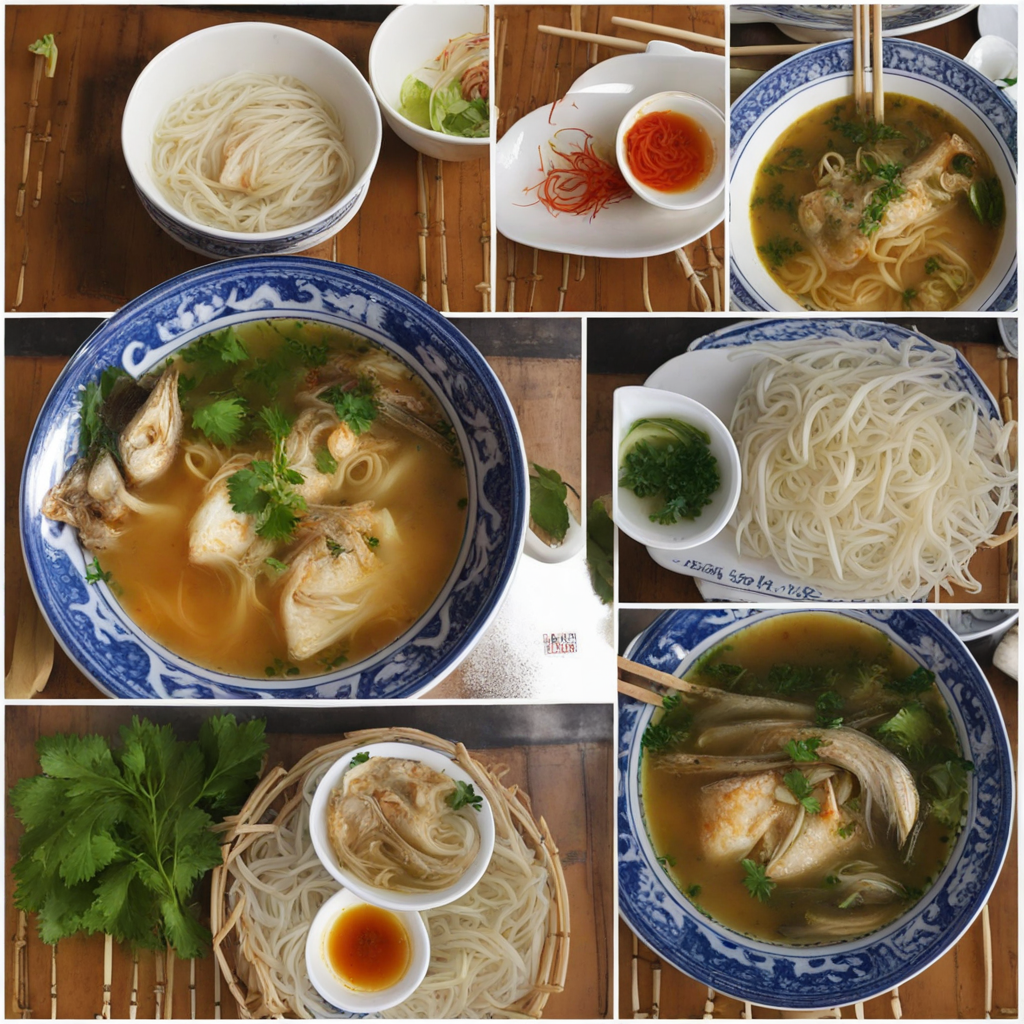Mont Di
Mon Ti, or "မုန့်တီ" in Burmese, is a beloved traditional dish from Myanmar that showcases the rich culinary heritage of the country. It is a type of rice noodle dish that is often served in a broth or as a dry preparation, and it has its roots deeply embedded in the local culture. The dish is particularly popular in the southern regions of Myanmar, especially in the Ayeyarwady Delta and the coastal areas, where rice cultivation and seafood play significant roles in the local diet. The history of Mon Ti is intertwined with the agricultural practices of the region, particularly the cultivation of rice and the use of fresh, local ingredients. Over the years, it has evolved to encompass various regional variations, reflecting the diverse tastes and preferences of the Myanmar people. Traditionally, the dish was prepared by families as a communal meal, emphasizing the importance of shared dining experiences in Myanmar culture. Today, Mon Ti can be found in street stalls, teahouses, and restaurants across the country, showcasing its widespread appeal. The flavor profile of Mon Ti is a delightful combination of savory, spicy, and slightly tangy notes. The broth, when used, is often infused with a medley of spices, such as turmeric, garlic, and chili, which impart a warm and aromatic quality to the dish. The noodles themselves are typically made from rice flour, resulting in a delicate texture that complements the broth or sauce. When served dry, Mon Ti is often garnished with fresh herbs,
How It Became This Dish
The History and Cultural Significance of မုန့်တီ (Monti) in Myanmar #### Origins of Monti Monti, known as မုန့်တီ in Burmese, is a beloved traditional food in Myanmar. Its origins can be traced back to the rich tapestry of Burmese culinary traditions that have evolved over centuries. The name "Monti" is derived from the Mon language, spoken by the Mon people, one of the ethnic groups in Myanmar. This highlights the intercultural exchanges that have shaped the country's foodways. The Mon people, who settled in the lower regions of Myanmar, particularly the Mon State, have historically contributed to the culinary landscape, blending their traditions with those of other ethnic groups. Monti is essentially a type of rice flour dumpling, often filled with various ingredients, including ground meat, vegetables, or lentils. The use of rice flour reflects the staple nature of rice in Burmese cuisine, which is a cornerstone of the diet in Myanmar. The technique of steaming food, as seen in Monti preparation, is also prevalent in many Southeast Asian cuisines, emphasizing the region's shared culinary heritage. #### Cultural Significance Monti is not just a food item; it holds cultural significance in Myanmar. It is commonly served during festive occasions, celebrations, and family gatherings. The preparation of Monti often involves the whole family, making it a communal activity that fosters bonding and shared traditions. This practice resonates with the broader cultural ethos in Myanmar, where food is a central element of social life. In Myanmar, food plays a crucial role in religious and cultural festivities. Monti is particularly popular during the Thingyan Water Festival, marking the Burmese New Year. During this time, families prepare a variety of traditional foods, and Monti is often included as a delicacy that symbolizes the abundance of the new year. It is also associated with the celebration of the harvest, reflecting the agricultural roots of the society. Furthermore, Monti's versatility allows it to adapt to various occasions and preferences. It can be enjoyed as a savory snack, a main dish, or even a dessert, depending on the filling and seasoning. This adaptability makes it an integral part of both everyday meals and special occasions in Burmese culinary traditions. #### Development Over Time As Myanmar has transitioned through various historical periods, so too has the preparation and consumption of Monti. During the colonial era, when the British took over Burma in the 19th century, there was an influx of foreign influences, which affected local cuisine. Although Monti remained a staple, the introduction of new ingredients and cooking methods led to variations in its preparation. For instance, while traditional Monti fillings often included pork or chicken, the colonial period saw the introduction of new spices and flavors that would enrich the dumpling's profile. In contemporary Myanmar, Monti continues to thrive as a popular street food, reflecting the urbanization and modernization of the country. Street vendors often serve Monti with a variety of dipping sauces, catering to diverse tastes and preferences. This shift from home cooking to street food markets underscores the changing dynamics of food consumption in Myanmar, where convenience and accessibility are increasingly prioritized. Moreover, the globalization of food culture has influenced how Monti is perceived and enjoyed. With the rise of social media and food blogging, traditional dishes like Monti are gaining international recognition. Food enthusiasts from around the world are discovering the flavors of Myanmar, leading to a renewed interest in traditional recipes and cooking techniques. This global attention has sparked a resurgence of pride in local cuisine among younger generations, who are eager to preserve their culinary heritage while also experimenting with fusion recipes that incorporate international elements. #### Ingredients and Preparation The traditional preparation of Monti involves a few key ingredients: rice flour, water, and a choice of filling. The dough is made by mixing rice flour with warm water to form a pliable consistency. The filling can vary widely, but common choices include spiced minced meat, vegetables, or even sweet fillings made from coconut or jaggery. Once the filling is prepared, small portions of dough are flattened, filled, and then folded into dumplings. Monti is traditionally steamed, which gives it a soft, chewy texture. The steaming process not only preserves the flavors but also enhances the nutritional value of the ingredients. In some regions, Monti is served with a drizzle of sesame oil or a sprinkle of fried shallots, adding layers of flavor that complement its simple base. #### Conclusion Monti is more than just a dish; it is a reflection of Myanmar's rich cultural heritage and culinary evolution. From its origins rooted in the Mon community to its status as a beloved street food, Monti embodies the spirit of communal cooking and celebration. Its versatility and adaptability have allowed it to thrive through historical changes, making it a staple in both traditional and modern Burmese cuisine. As Myanmar continues to embrace globalization while cherishing its heritage, Monti stands as a testament to the resilience of its culinary traditions. It is a dish that connects generations, bringing families together in the kitchen and at the table, celebrating the flavors and stories of Myanmar's diverse culture. Whether enjoyed during festive occasions or as a quick snack on the streets, Monti remains a cherished symbol of Myanmar's rich culinary legacy, inviting all to experience its unique flavors and the rich history it represents.
You may like
Discover local flavors from Myanmar







